Fast Segmentation of Range Images to Approximately Convex Surfaces
A robot's ability to recognize objects is necessary for flexible object manipulation. A useful preprocessing step in an object recognition process is image segmentation. In a standard image segmentation paradigm, an image of a scene is segmented into several regions potentially representing different objects. A human can easily recognize separate objects in an image. However, for a computer vision system, segmentation of a scene from a single 2D image or a point cloud obtained by a 3D camera is still an open problem. We have developed a computationally efficient approach for segmenting an organized point cloud, i.e. a depth image acquired by a Kinect sensor, such as the top right image shown below. First, the depth image (i.e. the point cloud) is transformed into a triangle mesh using the method proposed by Schmitt and Chen [1]. An example of such a mesh is presented in the bottom left image below. Then an iterative procedure based on the incremental convex hull algorithm and region growing is applied to detect approximately convex surfaces in the scene. The result is the labeling of each mesh triangle as well as each depth image pixel, where each pixel and each triangle is assigned to a approximately convex set. One such labelling is shown in the bottom right image below.
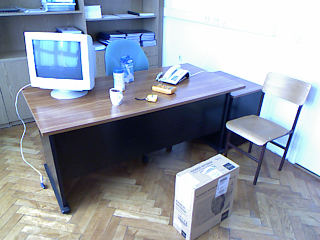
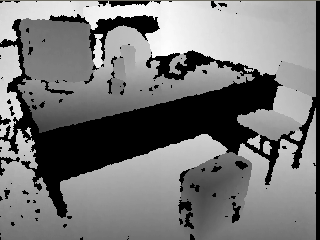
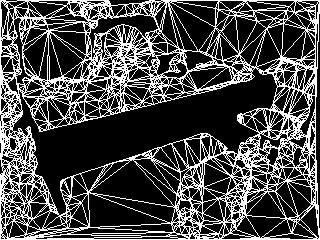
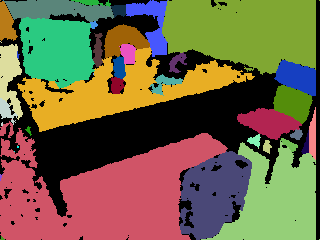
The proposed approach is designed as a mid-level processing stage in a vision-based perception system of a robot which should provide suitable geometric primitives for a high-level object recognition or robot localization algorithm. The details of our algorithm are presented in the scientific paper [2]. A C++ code implementing our algorithm can be downloaded here.
A 3D visualization of a segmented mesh obtained by applying our program to the depth map of the scene shown below is provided next to the image of this scene. You can use a mouse to rotate the presented 3D model of the scene.
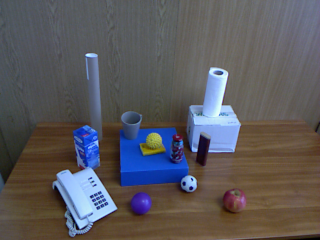
References:
[1] F. Schmitt and X. Chen, Fast segmentation of range images into planar regions, in Proceedings of the IEEE Computer Society Conf. on Computer Vision and Pattern Recognition (CVPR), 1991, pp. 710-711.
[2] R. Cupec, E. K. Nyarko, D. Filko, Fast 2.5D Mesh Segmentation to Approximately Convex Surfaces, Proceedings of the 5th European Conference on Mobile Robots, pp. 127-132, Örebro, Sweden, 2011 (PDF)
Robot Vision Library
The usage of the source code provided on this page is is being made available under the following
Please read the license before downloading the code!
The links for downloading the source code of Robot Vision Library (RVL) and a demo program which demonstrates the application of RVL for segmenting a point cloud into approximately convex subets are provided below.
If you become aware of factors that may significantly affect other users of the work, for example major bugs or deficiencies or possible intellectual property issues, we ask you to kindly report them to the copyright holder, if possible including redistributable fixes or workarounds.